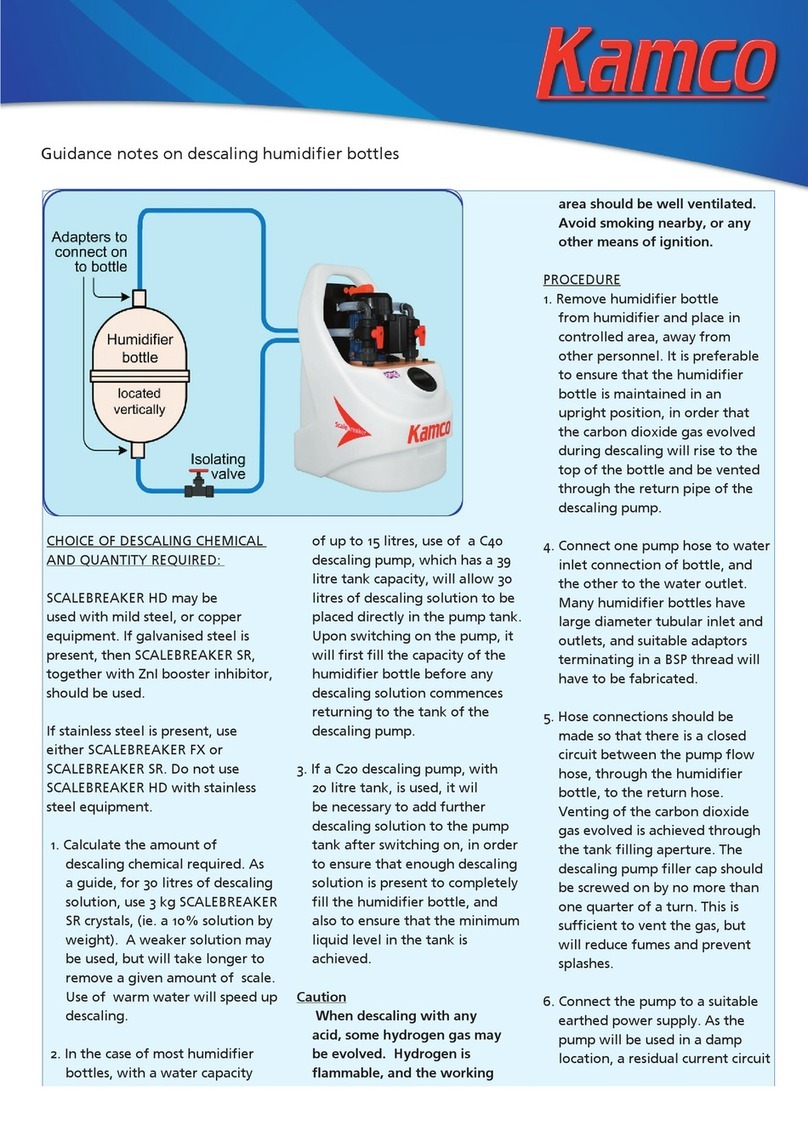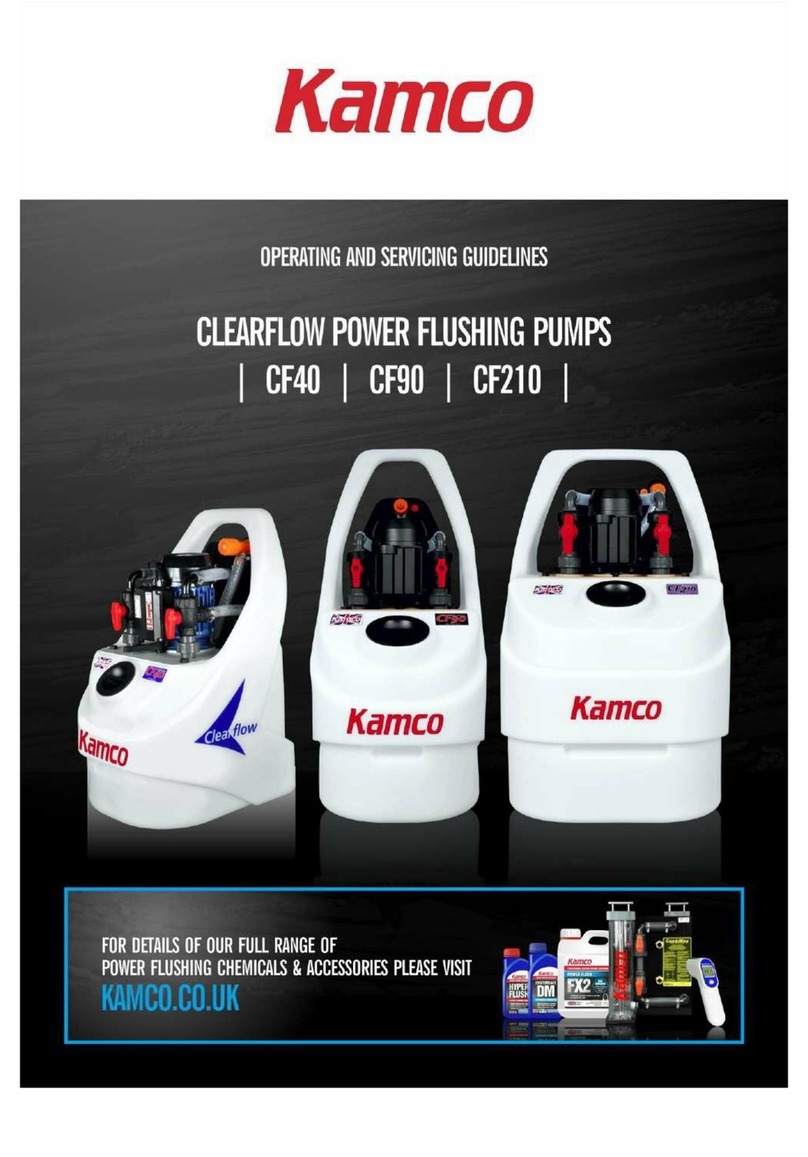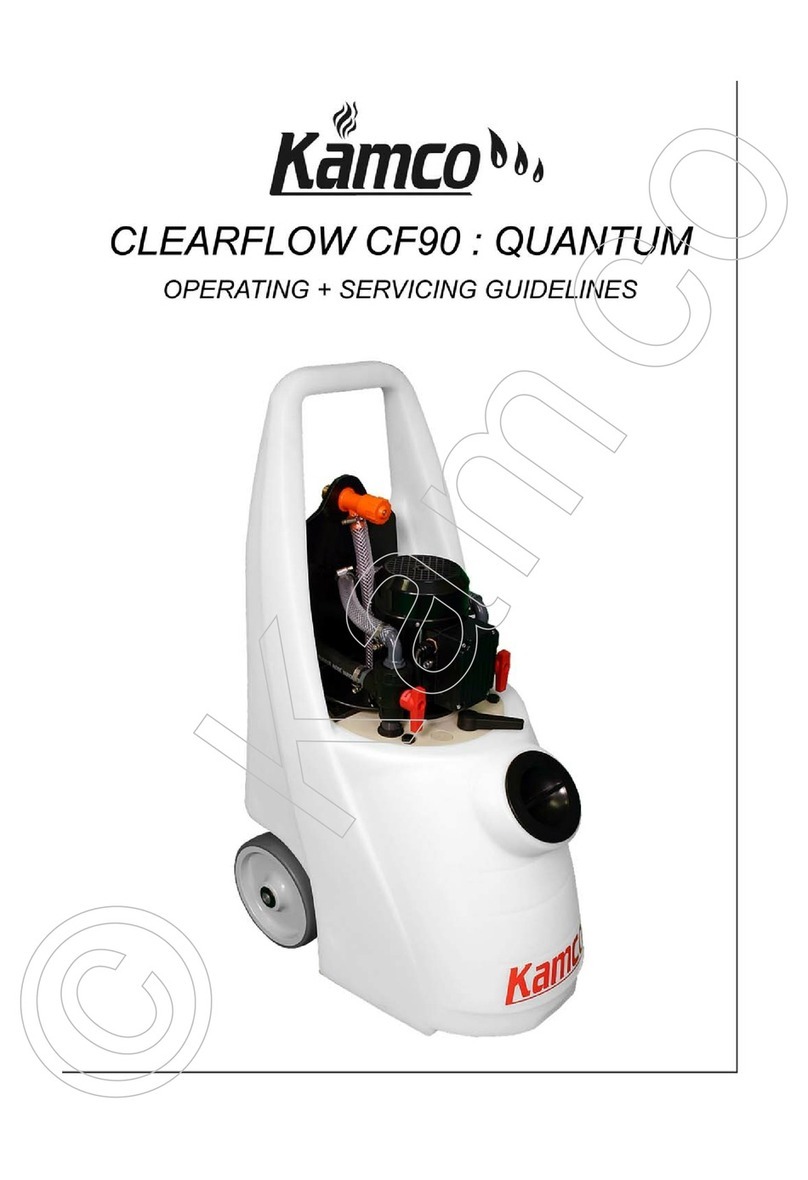
over night, we would not have any undue concerns,
as long as it was carefully ushed out and Neutralising
Crystals circulated through the system as is usual aer
using PowerFlush FX2.
Q. Do I really need to carry out the neutralising step
aer using PowerFlush FX2?
A. PowerFlush FX2 is based on phosphoric and citric
acids. It is the low pH that gives it its “bite”, but of course
it is necessary to ensure that the system water is back
to pH 7 before compleng the power ush, hence the
neutralising step.
The PowerFlush FX2 formulaon does include specic
organic corrosion inhibitors that protect the metals of
the heang system from aack during the Powerush.
However, if FX2 is le in the system, then with me and
temperature these parcular types of inhibitor break
down. Without their protecon, there would be some
corrosion in the system. The likelihood is then that some
while later the householder will call you and complain
that they have to repeatedly bleed the radiators.
When engineers force debris and ushing chemicals
out with the fresh water ow, they oen believe that
they have got all the acidic residue out – and they
MIGHT be right – and the pH of a sample could be 7.
The neutralising step (use of Neutralising Crystals) is a
precauon in case there is a small amount of the FX2 sll
present in a nook or dead end pipe in the system.
However, to get the maximum amount of debris out of a
system, then PowerFlush FX2 is the way to go.
Q. What’s the best chemical to use to ush a very old
(30 years) heang system?
A. If you do decide to power ush a very old system, then
it’s important to carry out a survey beforehand - and you
might change your mind subsequently!
We suggest Hyper-Flush for this applicaon (and not
PowerFlush FX2), because Hyper-Flush is a pH neutral
product and is therefore less likely to be problemac
than more aggressive chemicals. However, a 30 year old
system has seen a lot of acon, and we would suggest
that the system be monitored carefully (= watched!)
during the ush, whatever chemical you use. Aer 30
years there are probably radiators on the verge of failure,
with only a veneer of debris prevenng leakage from
deep pits in corroded areas, and so your watchword is
cauon.
Q. How oen should I check the corrosion inhibitor
level, and how do I do it?
A. Whilst annual checking of inhibitor level is an excellent
idea, actually doing this presents a problem to all heang
engineers – you have to know what brand inhibitor is IN
the system.
There is currently no test kit that will test
for the presence of all inhibitors. The only
safe thing is to drain down and start again if
the brand inhibitor in a system is unknown.
Kamco supply a test kit for SystemSafe-DM
inhibitors, but it is important to note that
this test kit will only give the correct answer when used
on a system containing Systemsafe DM.
The test is used to check the level of
molybdate in the treated water,. When
Systemsafe is dosed at the ideal rate
(impossible to guarantee in a real system of
unknown volume of course), the opmum
level is 100 parts per million for Systemsafe-DM.
Other manufacturers’ inhibitors may not use as much
molybdate.
There are many dierent formulaons, as most good
and proven inhibitors will be a blend of up to a dozen
components – some other inhibitors are oen very
basic, and very dilute - but they wouldn’t pass the NSF/
Buildcert inhibitor standard as Systemsafe DM does.
It is important that the adhesive scker supplied with
the inhibitor is le aached to the system / boiler so
that you know what inhibitor is in the system - and when
it was added.
Q. Is it OK to mix inhibitors?
A. It’s unlikely that mixing two inhibitors will do any
harm, however most inhibitors are NOT all the same, as
many people think. They are complex blends chosen for
the abilies of individual components, but it’s probably
true to say some elements will be common.
There’s a good chance that mixing two inhibitors will
provide some degree of protecon, but the ideal
situaon would be to drain down and only use one
inhibitor in your system (a Buildcert approved one), to
keep a system clean and long lasng.
Q. I oen work on solid fuel red boilers, which run at
a higher temperature. Do I need to use a higher dosage
rate of Systemsafe-DM?
A. No, Systemsafe-DM is also used on commercial
systems operang at higher temperatures and it
Page 7
































